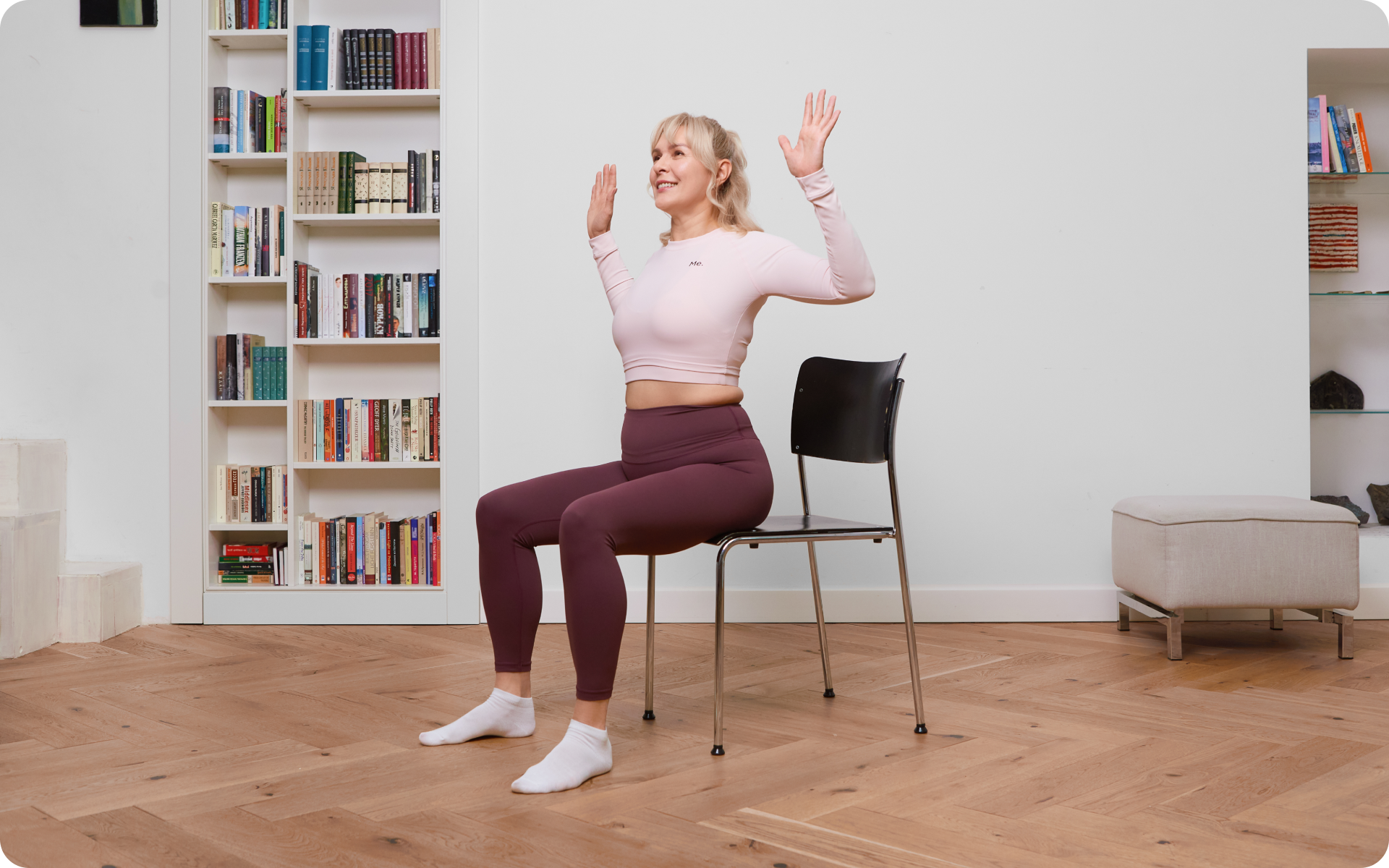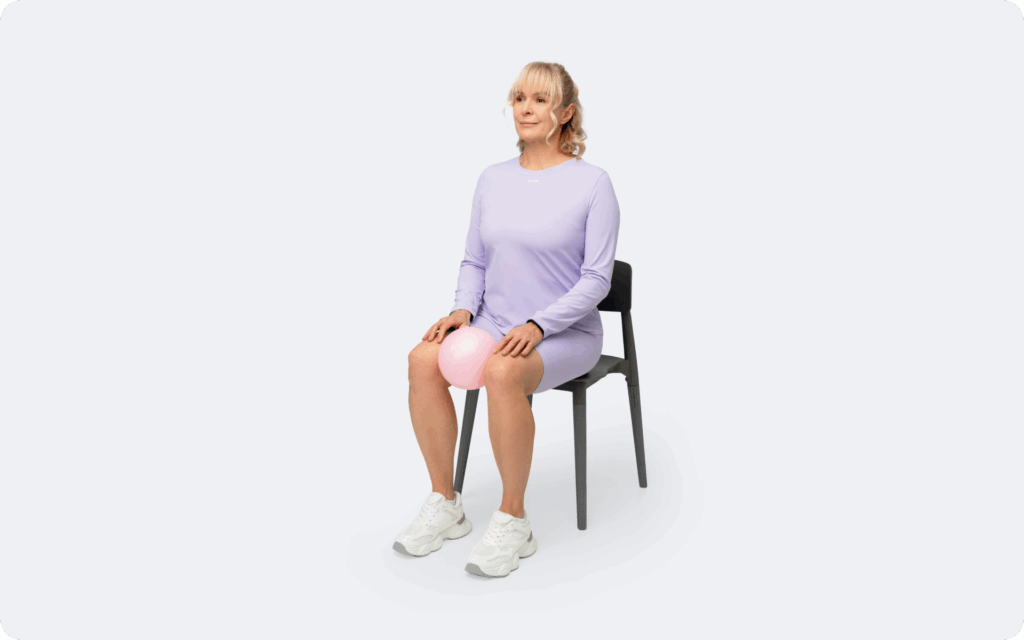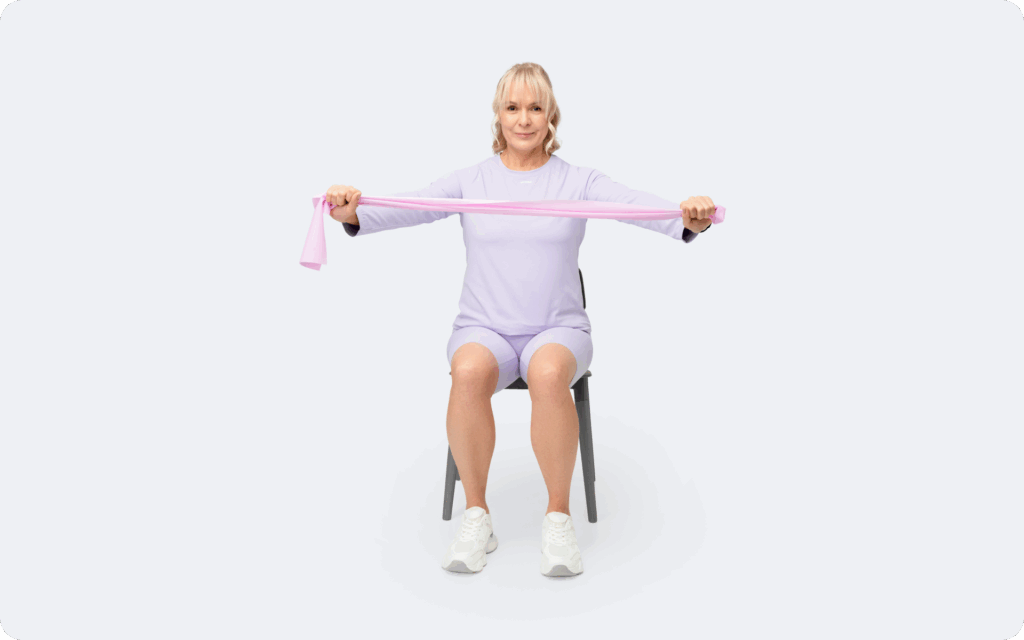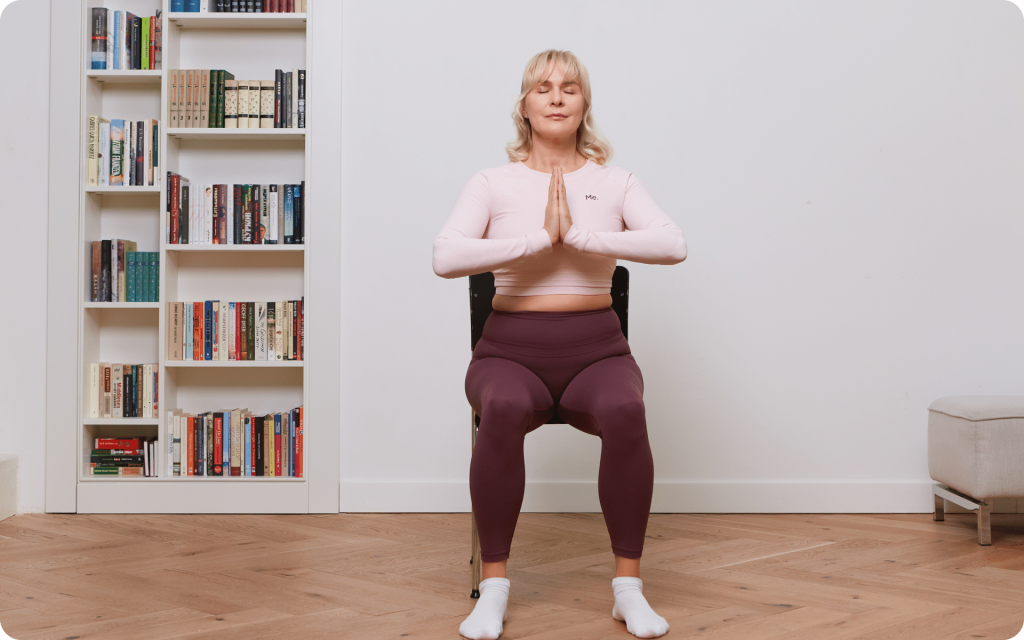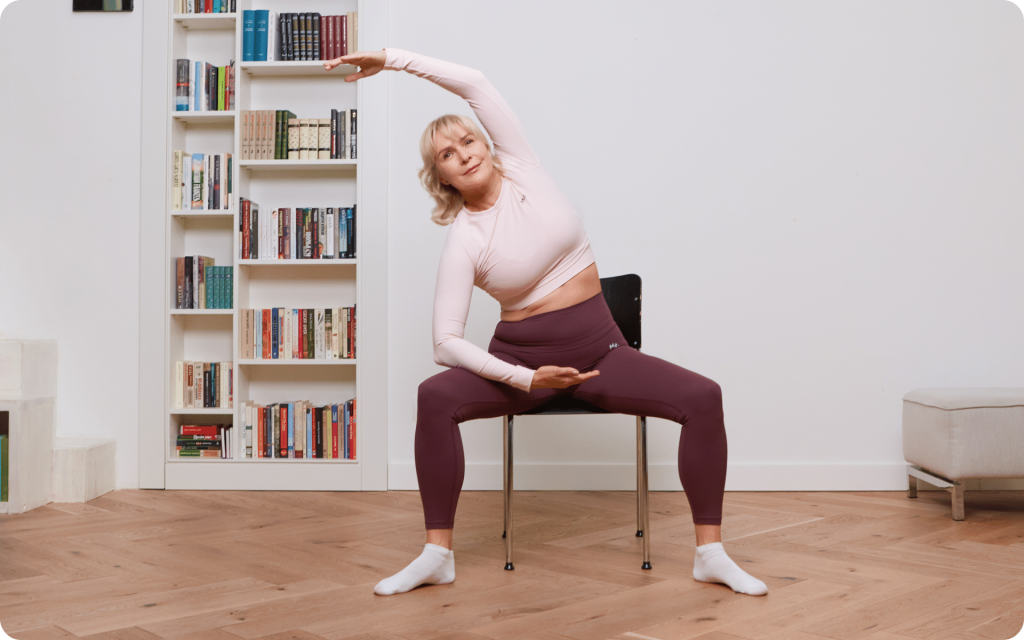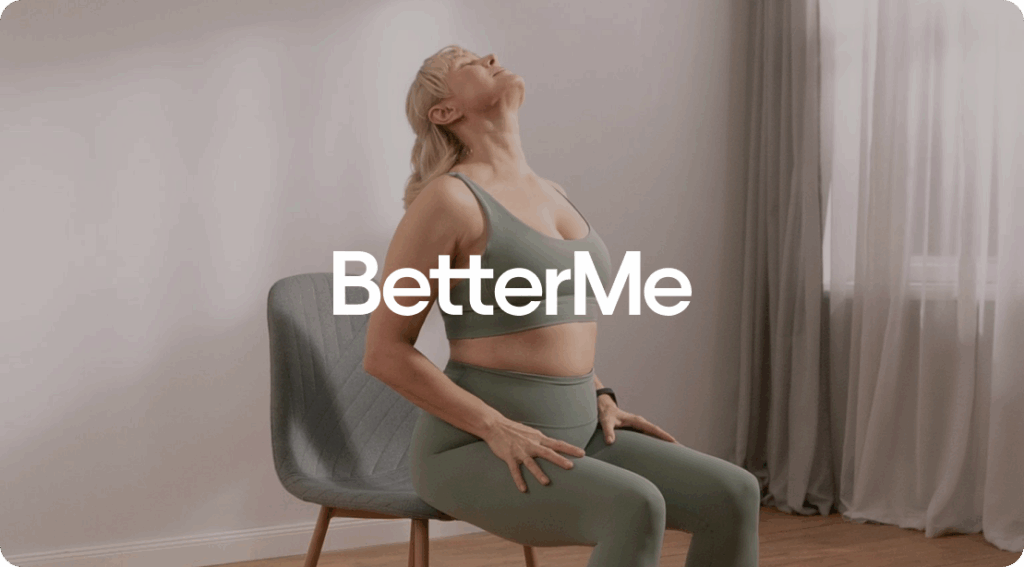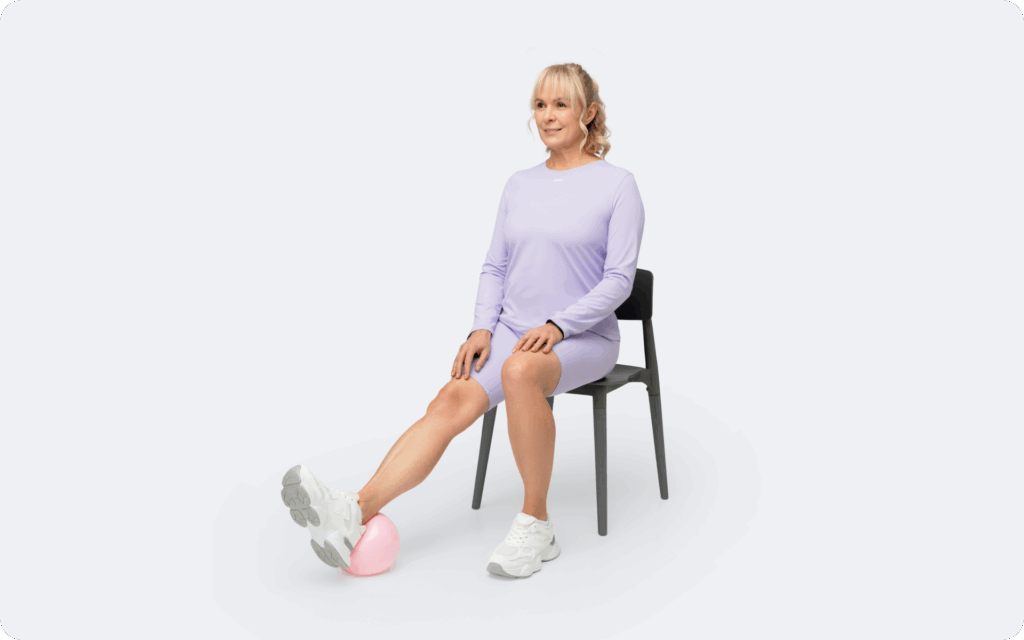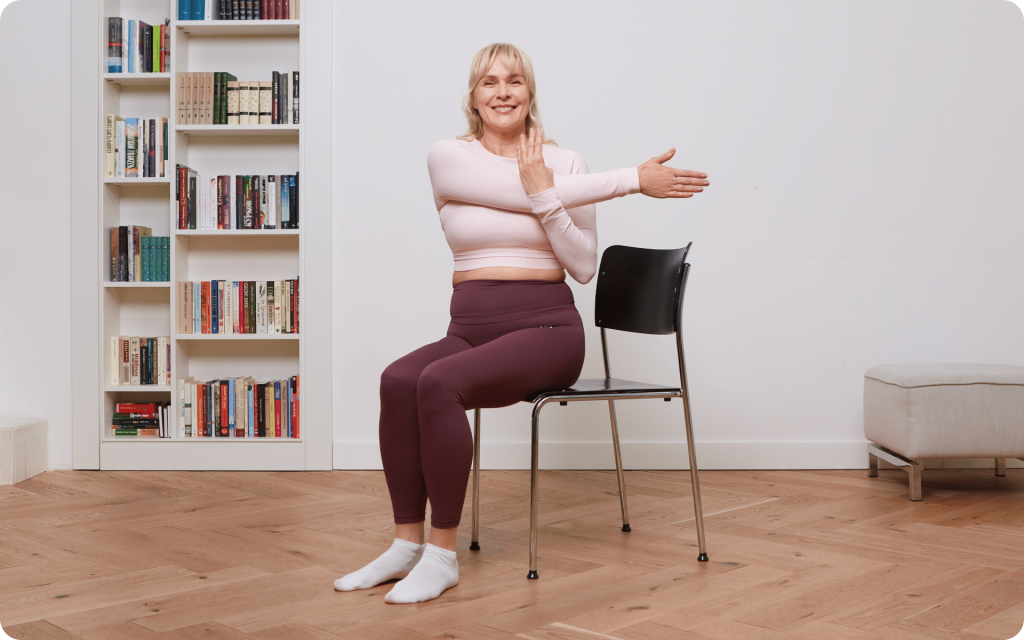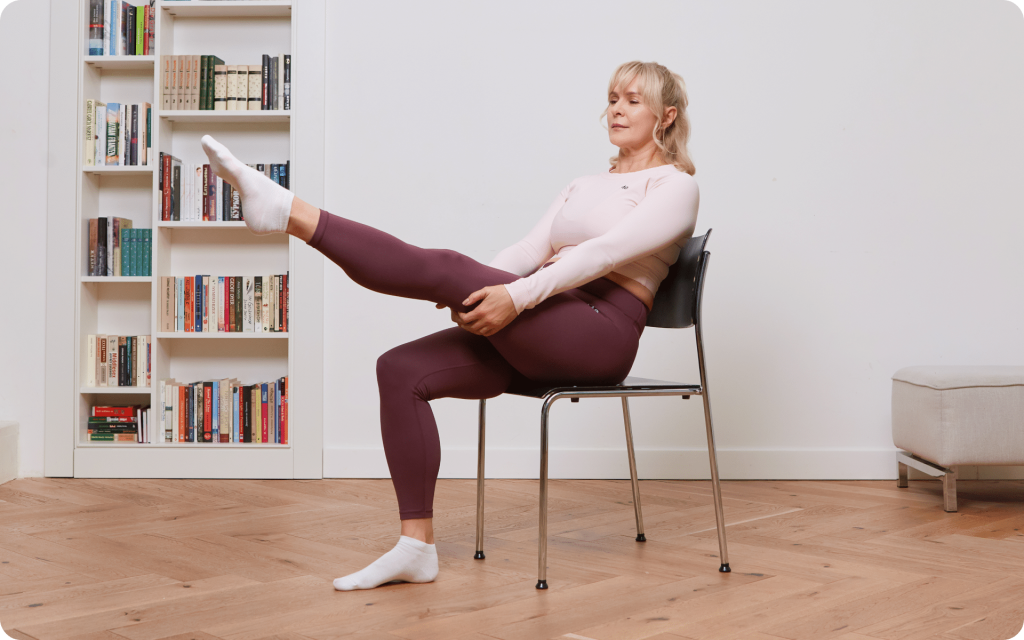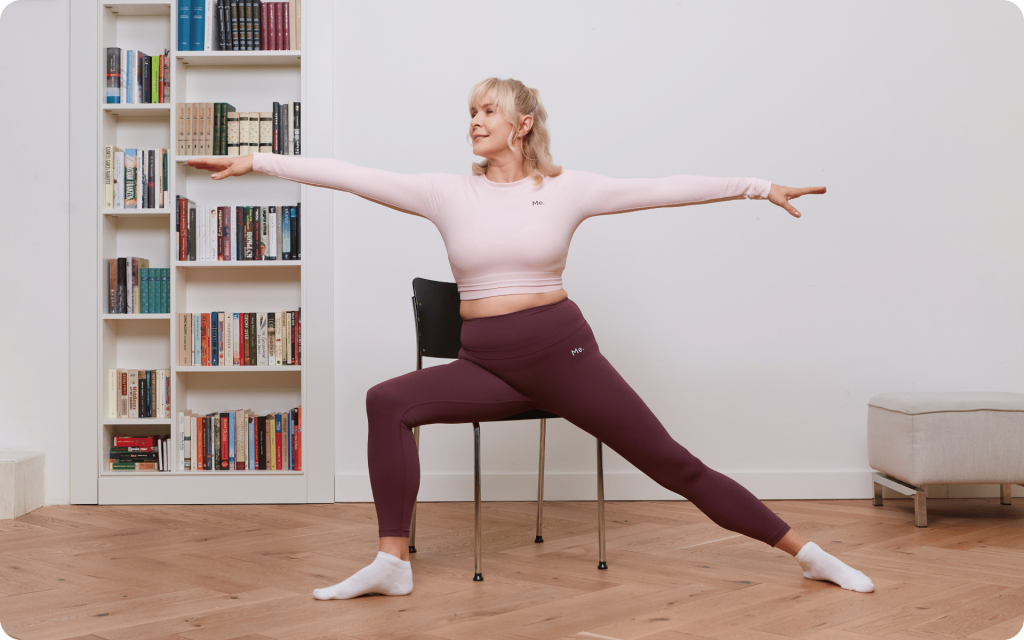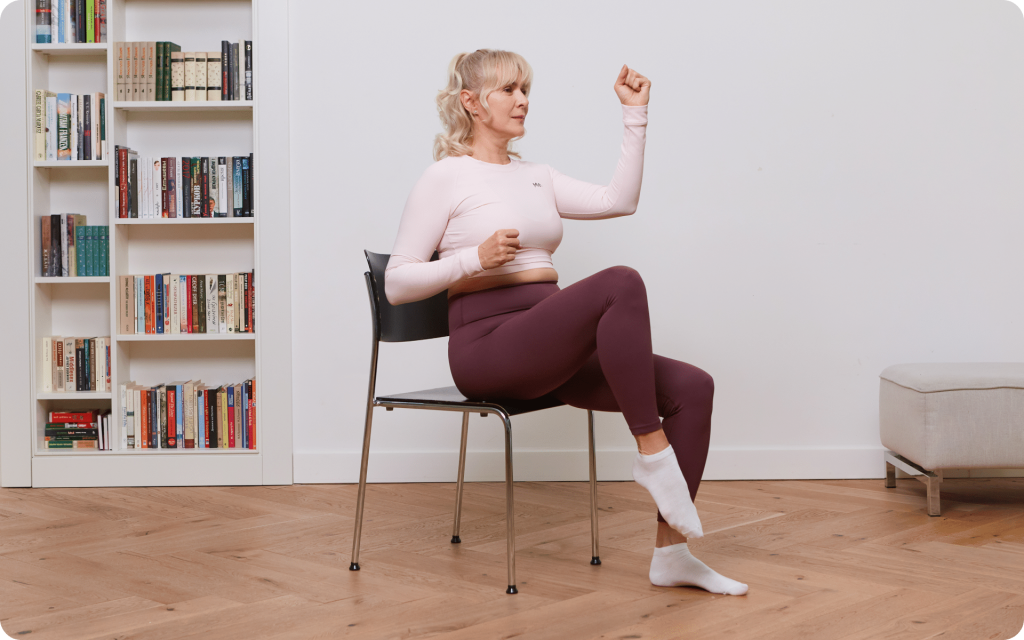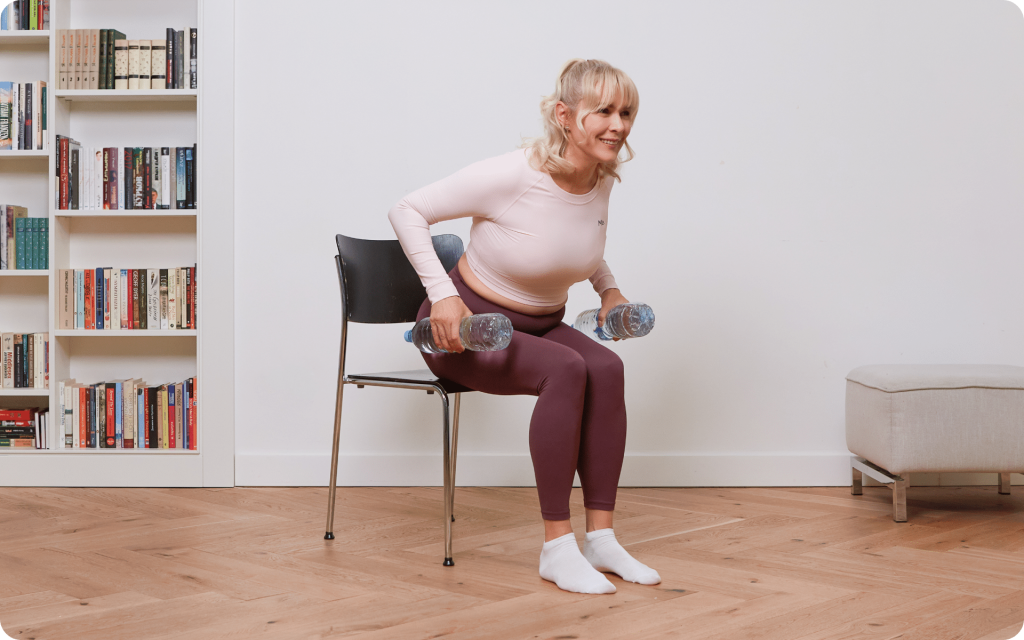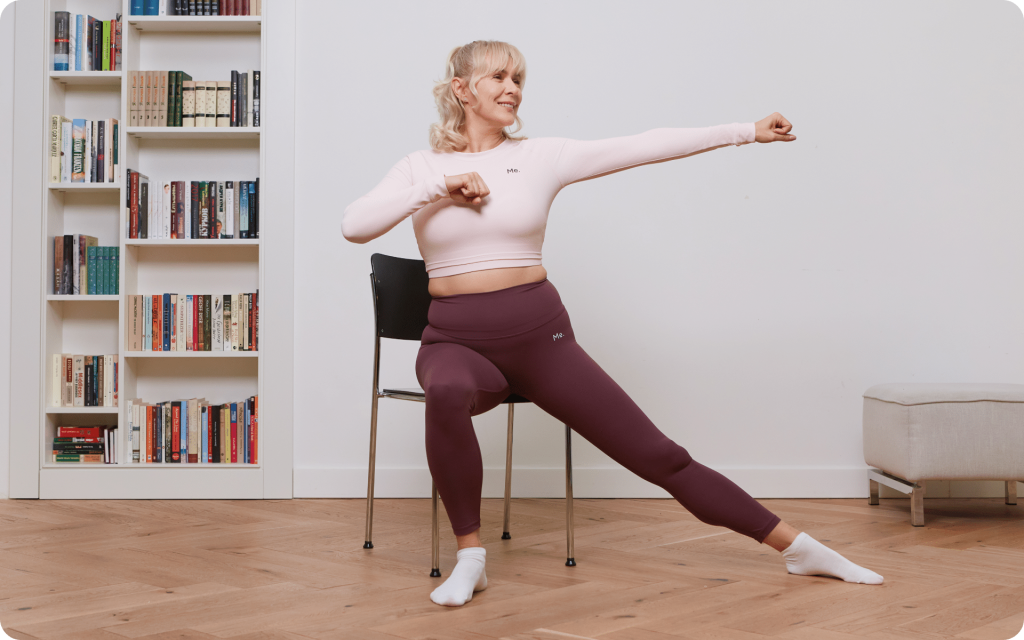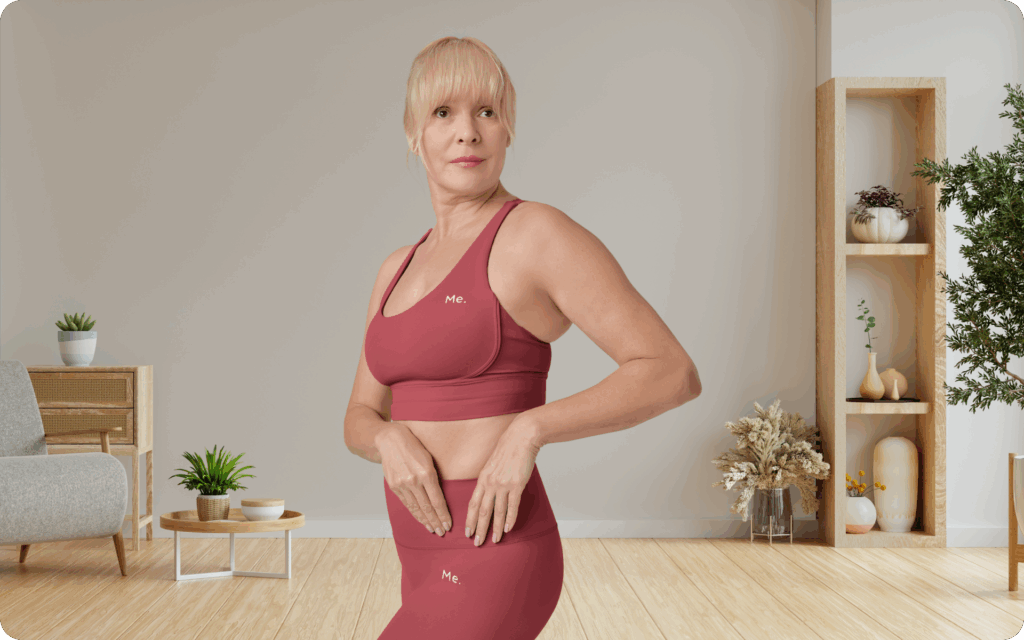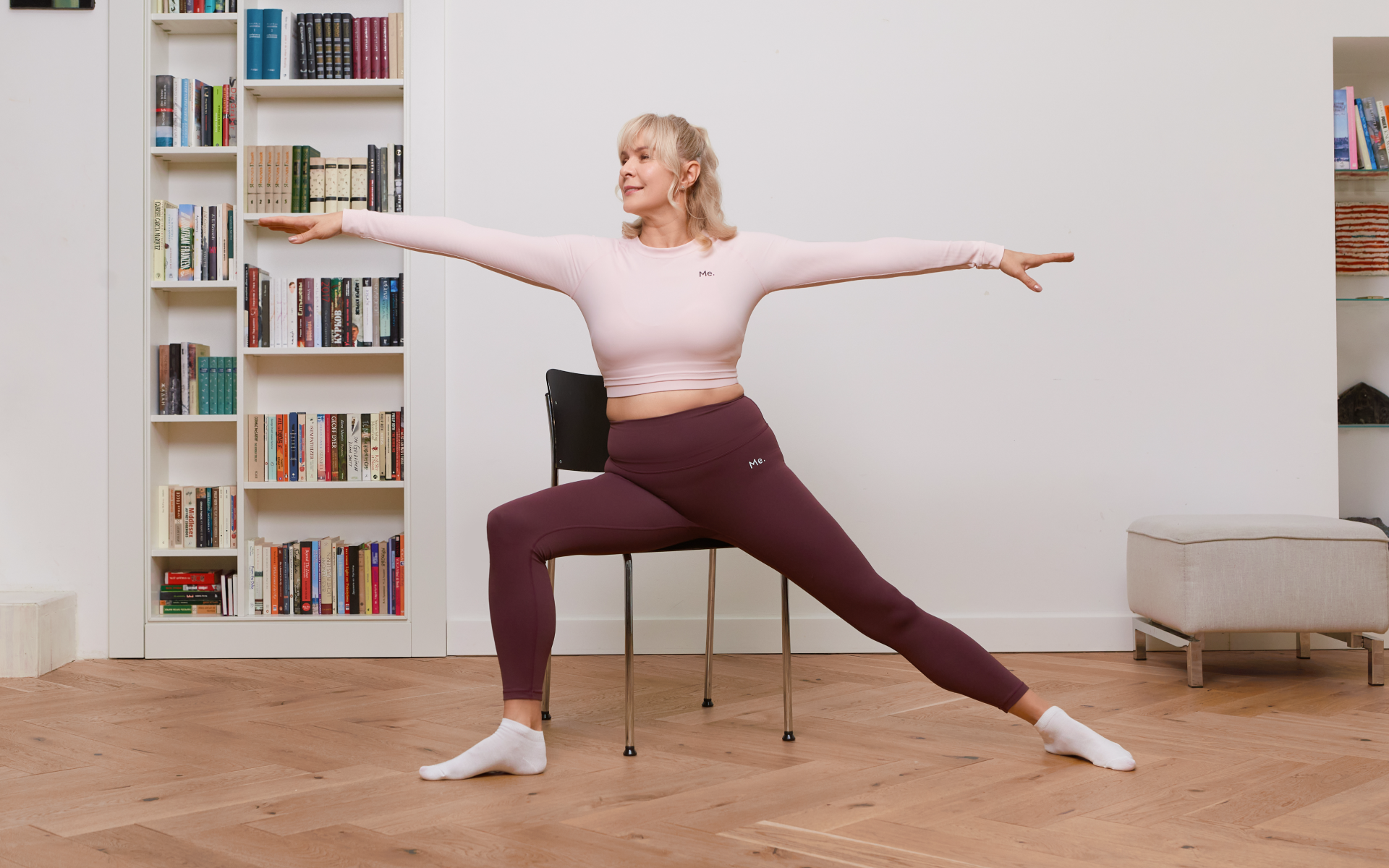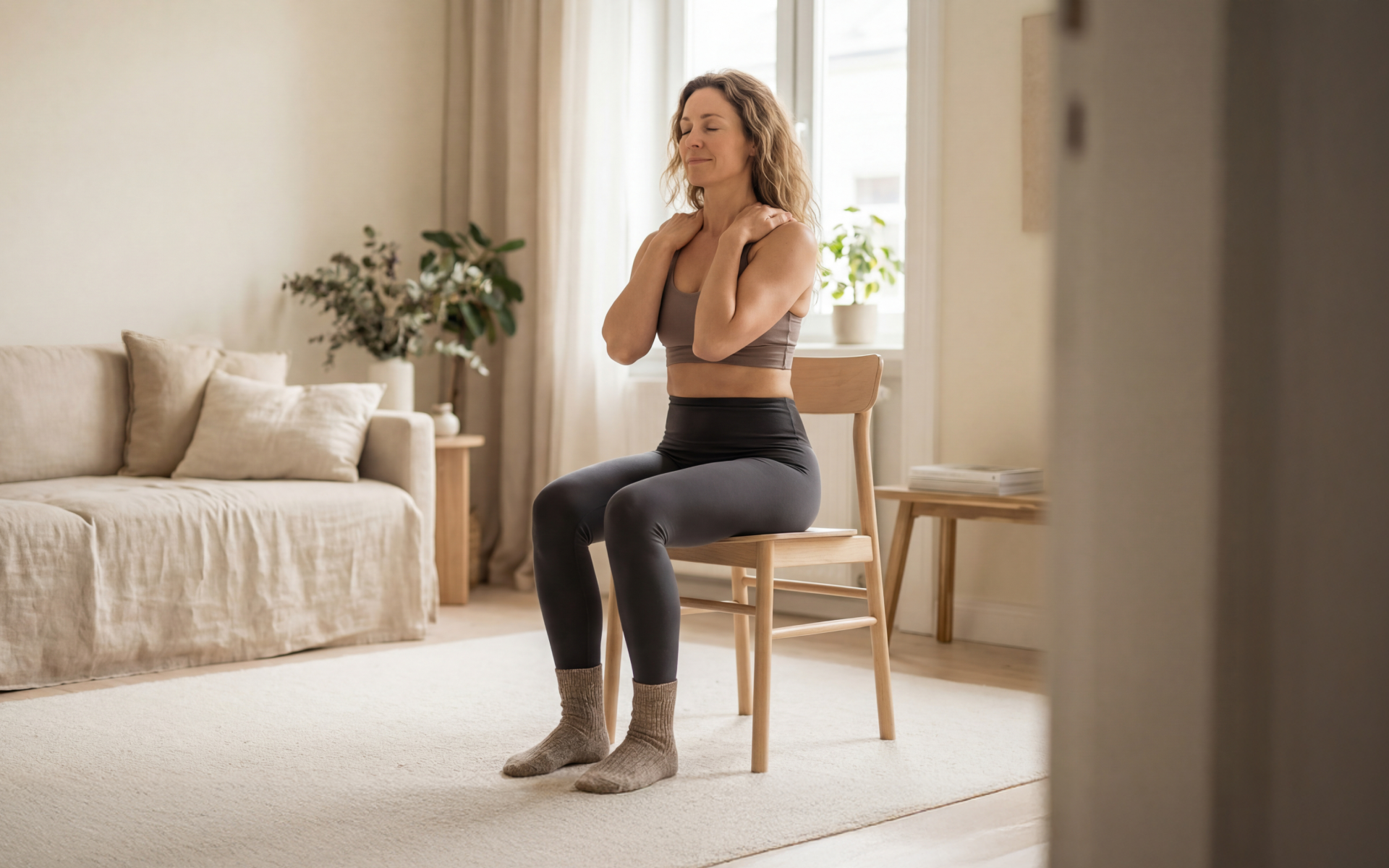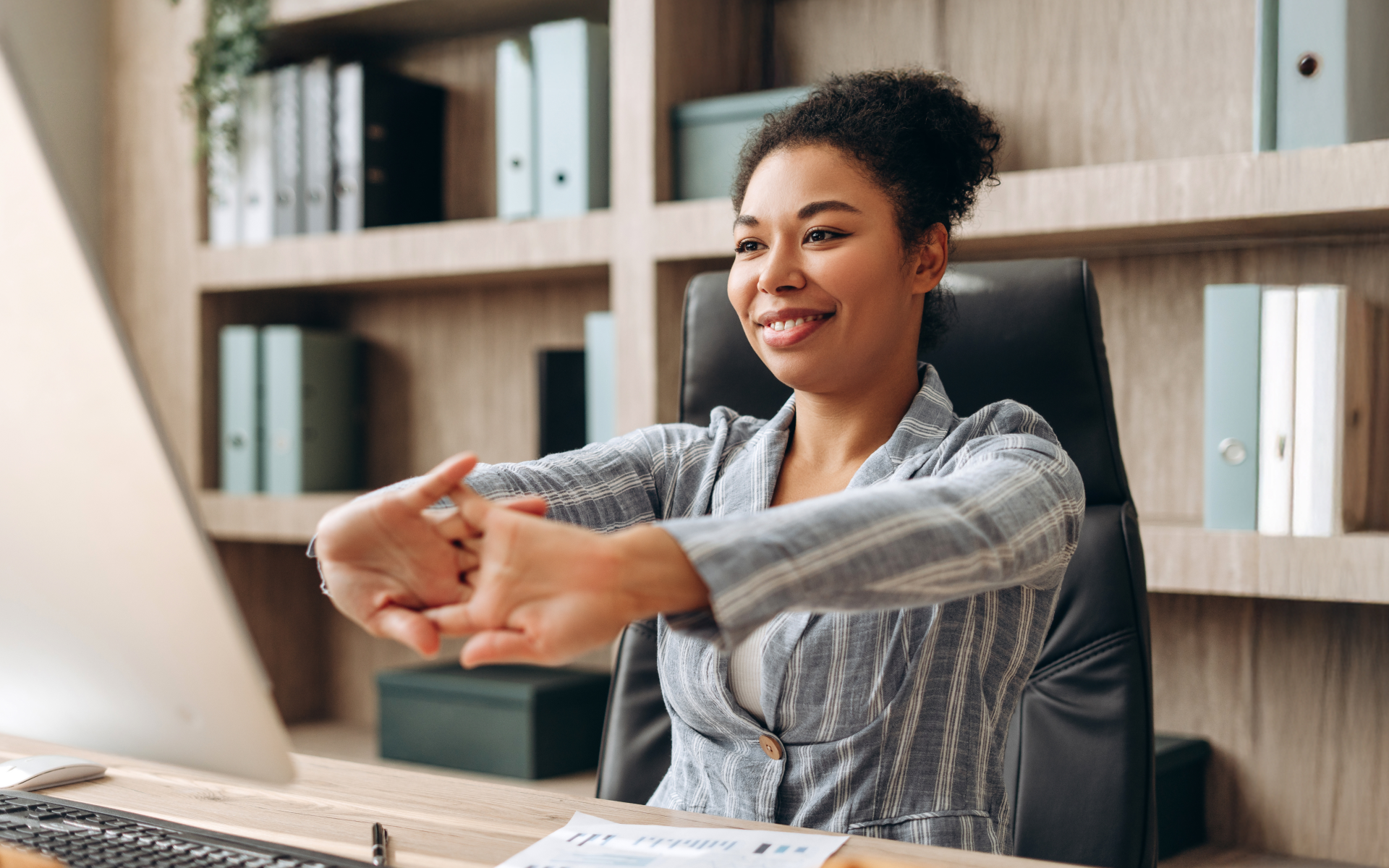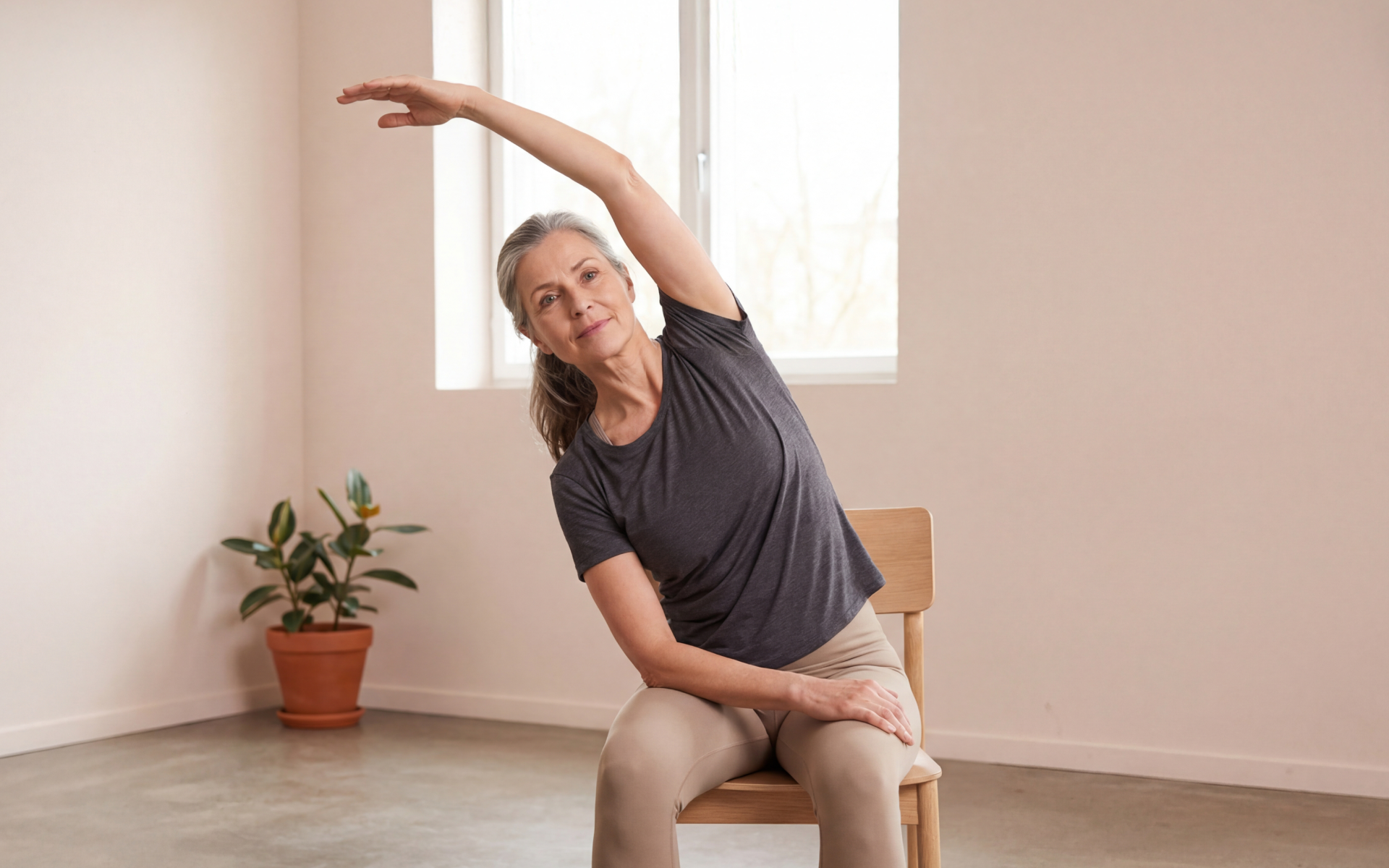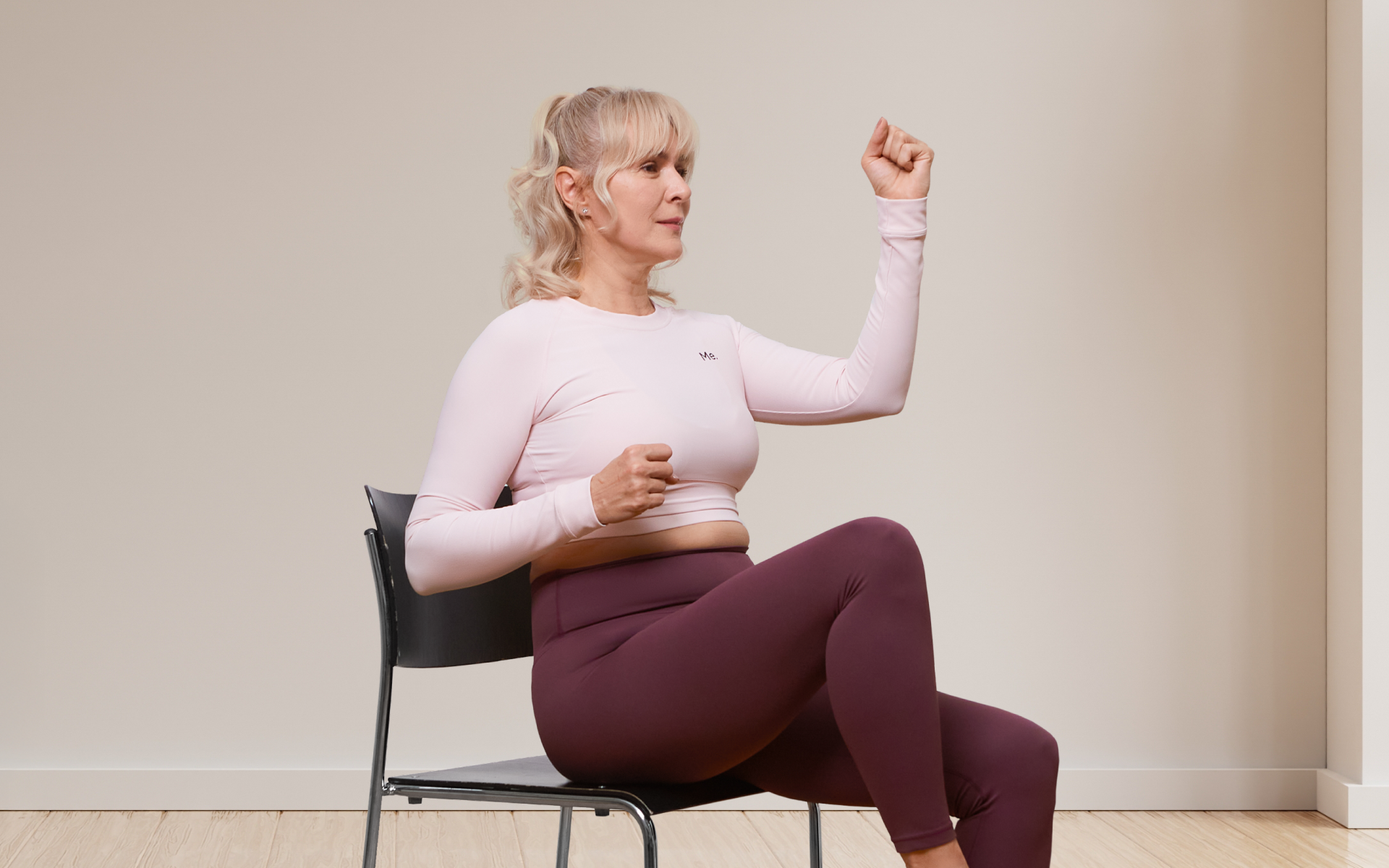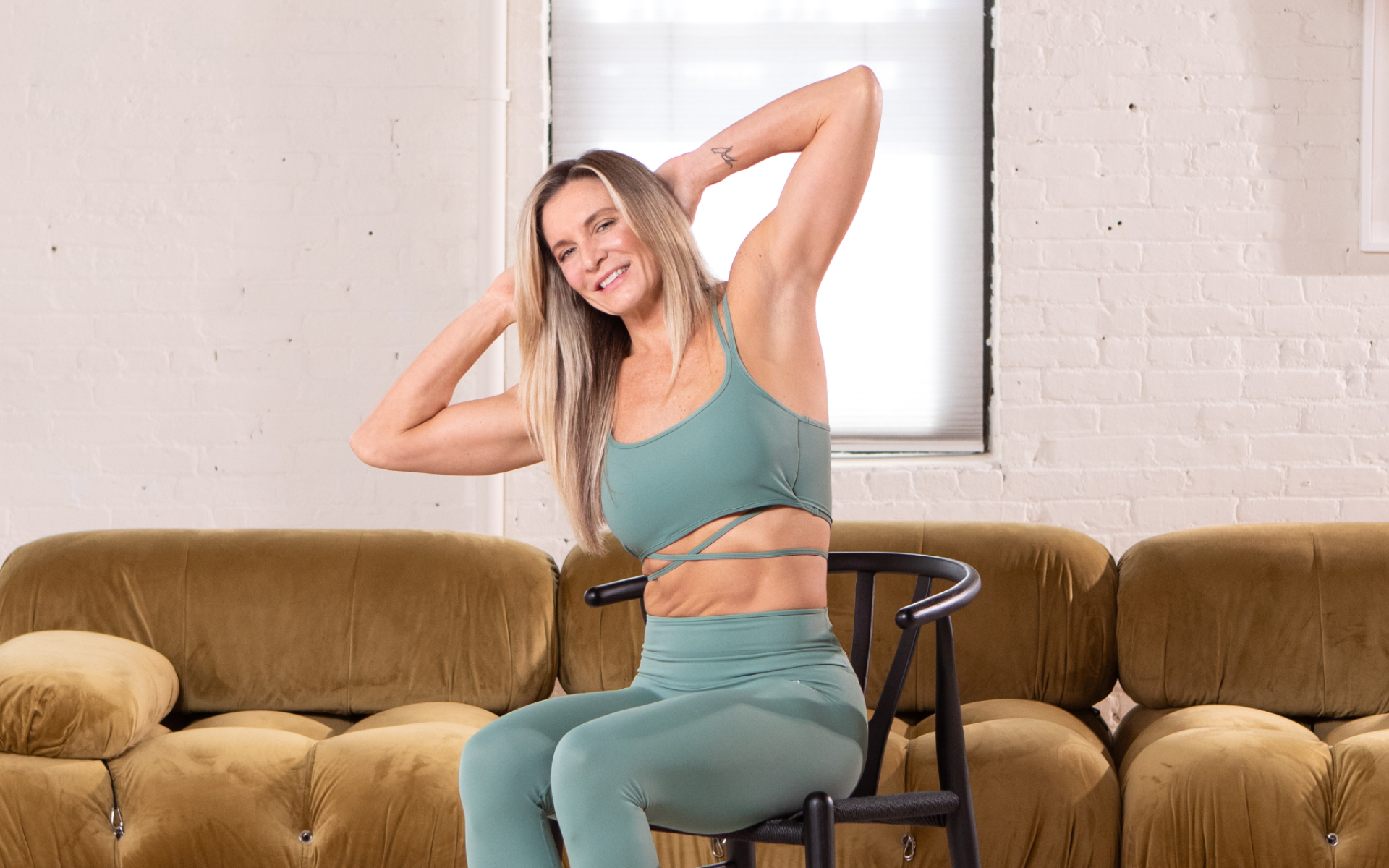Staying active becomes increasingly important as we age; however, traditional exercise routines can present challenges for seniors who deal with mobility limitations, balance concerns, or joint discomfort.
Chair yoga emerges as an accessible solution that brings the profound benefits of yoga practice to older adults in the comfort and safety of their own homes.
This gentle form of exercise adapts traditional yoga poses for seated practice, allowing seniors to experience improved flexibility, strength, and mental well-being, regardless of their current fitness level.
Whether you’re recovering from an injury, managing chronic conditions, or simply seeking a low-impact way to stay active, chair yoga offers a path to better health that honors your body’s current capabilities while gently encouraging growth and improvement.
This guide carefully selected nine chair yoga poses for seniors to do at home, each designed with senior safety and comfort in mind. These poses target key areas of concern for older adults, including maintaining spinal mobility, enhancing circulation, and reducing stress.
Is Chair Yoga Effective For Seniors?
Chair yoga offers remarkable benefits for seniors, supported by research that demonstrates its effectiveness in enhancing both physical and mental health outcomes for older adults.
Physical Benefits: Strength And Flexibility
Chair yoga significantly enhances muscular strength and flexibility in seniors.
Studies show that regular practice can improve joint mobility within 8-12 weeks, particularly in the spine, shoulders, and hips, areas that commonly become stiff with age (1).
The seated modifications allow seniors to work against gravity in different ways, building functional strength that translates to daily activities.
For example, the chair-supported twisting movements strengthen the core muscles essential for balance and posture, while arm raises improve shoulder mobility needed for reaching overhead.
BetterMe: Health Coaching app helps you achieve your body goals with ease and efficiency by helping to choose proper meal plans and effective workouts. Start using our app and you will see good results in a short time.
Balance And Fall Prevention
Research indicates that chair yoga can reduce the risk of falls in seniors by improving proprioception, the body’s ability to sense its position in space.
A 2012 study published in the BMC Complementary Medicine and Therapies found that seniors participating in modified chair yoga showed significant improvements in functional balance measures compared to control groups (2).
The poses work by challenging your balance in controlled ways while providing the safety net of chair support. This progressive approach helps rebuild confidence in movement while strengthening the small stabilizing muscles that prevent falls.
Mental And Emotional Well-Being
Chair yoga’s breathing exercises and mindful movements activate the parasympathetic nervous system, reducing stress hormones such as cortisol, according to recent studies (3). Seniors practicing chair yoga report improved mood, better sleep quality, and reduced anxiety levels (4).
The meditative aspects of the practice help combat age-related cognitive decline by promoting neuroplasticity, the brain’s ability to form new neural connections.
This increase in neuroplasticity can lead to improved:
- Focus
- Memory
- Overall mental clarity
For more comprehensive information about the physiological and psychological advantages, explore these detailed benefits of chair yoga for seniors.
Read more: Revolved Chair Yoga Pose: How to Do It, Benefits, Contradictions, and More
What Are Some Gentle Elderly Chair Yoga Poses?
Many caretakers and mature adults wonder, “What are safe elderly chair yoga poses?”
The following 9 poses form a complete chair yoga sequence designed specifically for senior practitioners. Each pose includes its Sanskrit origin, purpose, and step-by-step instructions for safe execution.
1. Chair Mountain Pose with Prayer Hands (Chair Tadasana Anjali Mudra)
Mountain Pose, known as Tadasana in Sanskrit, serves as the foundation for all standing yoga poses. When adapted for chair practice, it establishes proper posture and breathing patterns while promoting a sense of grounding and stability.
Steps to perform:
- Sit tall in your chair with feet flat on the floor, hip-width apart
- Align your knees directly over your ankles.
- Lengthen your spine by imagining a string pulling the crown of your head toward the ceiling.
- Bring your palms together at the heart center in prayer position (Anjali Mudra)
- Roll your shoulders down and back, opening your chest.
- Hold for 30-60 seconds while breathing deeply through your nose.
2. Chair Neck Rolls (Chair Greeva Sanchalana)
Greeva Sanchalana, or neck movements, help release tension accumulated in the cervical spine. This pose counteracts the forward head posture typical in seniors and improves circulation to the brain.
Steps to perform:
- Begin in Chair Mountain Pose with your hands resting on your thighs.
- Slowly lower your right ear toward your right shoulder.
- Gently roll your head forward, bringing your chin toward your chest.
- Continue rolling to the left, bringing your left ear toward your left shoulder.
- Complete the circle by rolling your head back to the center.
- Reverse direction and repeat 3-5 slow circles in each direction
3. Chair Seated Shoulder Circles
This movement mobilizes the shoulder joints and surrounding muscles, which often become tight from prolonged sitting or inactivity. Regular practice helps maintain the range of motion required for daily tasks, such as reaching and lifting.
Steps to perform:
- Sit with your spine straight and arms relaxed at your sides
- Lift your shoulders toward your ears.
- Roll them back, squeezing your shoulder blades together.
- Lower your shoulders.
- Roll them forward to complete the circle.
- Perform 5-8 slow circles backward, then reverse for 5-8 circles forward
4. Chair Seated Side Stretch Pose
Side stretches target the intercostal muscles between your ribs and the quadratus lumborum in your lower back. This pose improves spinal flexibility and can help alleviate lower back discomfort common in seniors.
Steps to perform:
- Sit tall with both feet firmly planted on the ground
- Place your left hand on the chair seat for support.
- Inhale and raise your right arm overhead
- Exhale and gently lean to the left, creating a smooth curve along your right side.
- Keep your hips square and avoid leaning forward or backward.
- Hold for 15-30 seconds, then slowly return to center.
- Repeat on the opposite side
5. Chair Seated Twists (Parivrtta Chair Tadasana)
Parivrtta means “revolved” in Sanskrit, and these twisting movements promote spinal mobility while stimulating digestion and detoxification.
The sitting yoga for seniors poses help maintain the rotational movement often lost with age.
Steps to perform:
- Sit sideways in your chair with your right side facing the back of the chair
- Place both hands on the back of the chair.
- Inhale to lengthen your spine.
- Exhale and gently twist your torso to the right, using your hands for gentle leverage
- Keep your hips facing forward as you rotate your upper body.
- Hold for 15-30 seconds, breathing normally.
- Return to the center and repeat on the opposite side
6. Chair Cat-Cow Pose (Chair Marjaryasana Bitilasana)
This flowing movement combines Marjaryasana (Cat Pose) and Bitilasana (Cow Pose) to create spinal flexibility. The poses help maintain the natural curves of your spine while releasing tension in your back muscles.
Steps to perform:
- Sit with your hands placed on your thighs
- For Cow Pose: Inhale, arch your back, lift your chest, and look up slightly
- For Cat Pose: Exhale, round your spine, tuck your chin toward your chest, and draw your belly button inward
- Continue flowing between these two positions with your breath
- Perform 5-8 slow repetitions, moving with your breath rhythm
7. Chair Flexing Foot Pose
This pose focuses on improving circulation in the lower legs and maintaining ankle flexibility. It’s particularly beneficial for seniors who spend long periods sitting or have circulation concerns.
Steps to perform:
- Sit with your back supported and feet flat on the floor
- Extend your right leg straight in front of you.
- Flex your right foot, pulling your toes back toward your shin.
- Point your foot, extending your toes away from you.
- Rotate your ankle in slow circles, 5 times in each direction.
- Lower your foot back to the floor and repeat with the left leg
8. Three-Part Breath Chair
This pranayama (breathing) technique teaches you to use your full lung capacity, improving oxygen intake and promoting relaxation.
It’s one of the most fundamental breathing practices in yoga.
Steps to perform:
- Sit comfortably with your hands resting on your abdomen
- Inhale slowly, first expanding your belly (diaphragmatic breathing)
- Continue inhaling, allowing your rib cage to expand outward.
- Complete the breath by filling your upper chest.
- Exhale in reverse order: chest, ribs, then belly
- Practice for 5-10 breaths, maintaining a slow, controlled rhythm
Reasons why BetterMe is a safe bet: a wide range of calorie-blasting workouts, finger-licking recipes, 24/7 support, challenges that’ll keep you on your best game, and that just scratches the surface! Start using our app and watch the magic happen.
9. Alternate Nostril Breathing Chair
Nadi Shodhana, also known as alternate nostril breathing, helps balance the nervous system and can improve focus and reduce anxiety. This technique has been practiced for thousands of years to promote mental clarity and focus.
Steps to perform:
- Sit comfortably with your left hand resting on your thigh
- Use your right thumb to gently close your right nostril.
- Inhale slowly through your left nostril for 4 counts.
- Use your ring finger to close your left nostril while releasing your thumb.
- Exhale through your right nostril for 4 counts.
- Inhale through the right nostril, then switch and exhale through the left.
- Continue for 5-10 rounds, maintaining slow, even breaths.
For a complete sequence incorporating these poses, check out our comprehensive Chair Yoga Sequence For Seniors.
Read more: 10 Chair Yoga Poses For Beginners
How To Do Elderly Chair Yoga Poses Safely?
Safety remains the top priority when practicing chair yoga, especially for seniors who may have underlying health conditions or physical limitations.
How to do chair yoga for seniors starts with the following steps:
- Choosing The Right Chair
Select a sturdy chair without wheels that won’t slide or tip during practice.
The chair should have a straight back for support and be at a height where your feet rest comfortably on the floor with your knees at approximately 90 degrees.
Avoid chairs with arms if possible, as they can restrict movement during side stretches and twists. If you must use an armchair, ensure the arms are low enough to avoid interfering with arm movements.
- Pre-Practice Health Considerations
Consult with your healthcare provider before starting any new exercise program, especially if you have cardiovascular conditions, osteoporosis, or a history of recent injuries.
Certain poses may need modifications or should be avoided entirely based on your medical history.
If you have osteoporosis or osteopenia, avoid forward bending from the waist and extreme spinal twists, as these movements can increase fracture risk in weakened bones.
- Listening To Your Body
Never force a movement or push through pain.
Chair yoga should feel challenging but never painful. Distinguish between the mild discomfort of stretching tight muscles and the sharp or intense pain that signals potential injury.
Stop immediately if you experience dizziness, chest pain, shortness of breath, or any concerning symptoms. These could indicate that you’re overexerting yourself or that a pose isn’t appropriate for your current condition.
- Breathing Guidelines
Maintain normal breathing throughout all poses unless specifically instructed otherwise. Holding your breath can cause blood pressure spikes and reduce the benefits of the practice.
If you feel lightheaded during breathing senior yoga chair exercises, return to normal breathing and rest. Some seniors may be sensitive to breathing techniques, especially if they have respiratory conditions.
What Is A Good Side Stretch In Chair Yoga For Seniors?
The chair seated side stretch pose stands out as one of the most beneficial and accessible side stretches for seniors practicing chair yoga.
This pose effectively targets:
- Intercostal muscles between your ribs
- The latissimus dorsi that runs along your back
- The quadratus lumborum which is in your lower back.
These muscles often become tight from prolonged sitting or age-related postural changes.
Modified approach for seniors:
Begin with smaller movements and gradually increase your range of motion as your flexibility improves. Keep your supporting hand firmly planted on the chair seat, rather than on the floor, to provide better stability and control.
If reaching overhead feels uncomfortable, you can modify it by placing your stretching arm on your hip and simply leaning to the side without elevating the arm.
This modification still provides an effective lateral stretch while maintaining safety.
Breathing pattern:
Inhale to prepare and lengthen your spine, then exhale as you lean into the stretch.
Continue breathing normally while holding the pose, using each exhale to gently deepen the stretch without forcing the movement.
Hold the stretch for 15-30 seconds on each side, or longer if comfortable. The key is consistency rather than intensity; regular practice of gentle stretches provides more benefit than occasional intense stretching sessions.
What Equipment Do You Need For Chair Yoga For Seniors?
Chair yoga requires minimal equipment, making it an accessible practice for most seniors regardless of their budget or living situation.
- Essential Equipment
Chair: The most crucial piece of equipment is a sturdy, stable chair without wheels.
Kitchen or dining room chairs work well, as they provide the right height and stability for most people.
Comfortable clothing: Wear loose-fitting, breathable clothing that allows for easy movement. Avoid restrictive garments that might limit your range of motion or circulation.
- Optional Supportive Props
Cushion or pillow: A small cushion can provide extra comfort for your lower back or seat, especially during longer practice sessions. This is particularly helpful for seniors with limited hip mobility or lower back sensitivity.
Yoga strap or towel: These can assist with poses requiring reaching or stretching, such as the hamstring stretch. A simple hand towel can serve the same purpose as a higher-priced yoga strap.
Blanket: Keep a light blanket nearby for warmth during relaxation portions of your practice, as body temperature can drop when you’re not actively moving.
- Creating Your Practice Space
Choose a quiet area with enough space to extend your arms and legs without obstruction. Ensure good ventilation and comfortable temperature, as some poses may generate mild warmth while others might leave you feeling cool.
Position your chair on a non-slip surface, such as a yoga mat or carpet, to prevent sliding during more dynamic movements. If practicing on hardwood floors, consider placing a small rug under your chair for added stability.
Good lighting is important for safety and mood. Natural light can be energizing for morning practice, while softer lighting might be preferable for evening sessions focused on relaxation.
How Many Times A Week Should A Senior Do Chair Yoga?
The World Health Organization recommends that adults aged 65 and older engage in at least 150 minutes of moderate-intensity aerobic physical activity per week, plus muscle-strengthening activities on two or more days per week (5).
Optimal Frequency For Chair Yoga
Older adults can practice chair yoga daily without concern for overexertion, as it’s gentle enough for everyday practice while still providing meaningful elderly chair yoga poses benefits.
Most seniors find that practicing 15-30 minutes per day, 4-6 times per week, provides optimal results.
Beginner schedule: Start with 2-3 sessions per week, allowing rest days between practices to give your body time to adapt. Each session can be as short as 10-15 minutes, allowing you to build familiarity with the poses.
Intermediate schedule: Progress to 4-5 sessions per week, extending practice time to 20-30 minutes. You can begin incorporating more challenging variations or holding poses for more extended periods.
Advanced schedule: Daily practice becomes possible and beneficial, with sessions ranging from 20-45 minutes depending on your goals and available time.
Integration With Other Activities
Chair yoga complements rather than replaces other forms of exercise. It can serve as a gentle warm-up before walking, swimming, or other activities, or as a relaxing cool-down afterward.
Consider using chair yoga as an active recovery on days when you’re not engaging in more intense exercise. The gentle movements promote circulation and flexibility without adding stress to your system.
Morning practice can help prepare your body and mind for the day ahead, while evening sessions can promote relaxation and better sleep quality.
Many seniors find that splitting their practice (doing energizing poses in the morning and relaxing poses in the evening) works well for their lifestyle.
For additional guidance on incorporating chair yoga into your broader fitness routine, explore our collection of yoga chair exercises for seniors.
Yes, chair yoga is gentle enough for daily practice. The low-impact nature of the poses makes it safe for seniors to practice every day without risk of overexertion or injury. Daily practice enhances the benefits by maintaining consistent gains in movement and flexibility. It can even make a great practice to start your day every morning! Most seniors notice initial benefits within 2-3 weeks of regular practice, including improved mood, better sleep, and reduced stiffness. Measurable improvements in flexibility and strength typically become apparent after 6-8 weeks of consistent practice, with continued progress over months of regular participation. While chair yoga primarily focuses on flexibility, balance, and gentle strengthening, it can also contribute to improved muscle tone, particularly in the core, arms, and back. However, for significant muscle building, seniors should combine chair yoga with additional resistance training exercises appropriate for their fitness level. A 30-minute chair yoga session typically burns 50-80 calories for the average senior, depending on body weight and intensity level (6). While this is modest compared to more vigorous exercises, the metabolic benefits extend beyond the session through improved circulation, better sleep, and stress reduction.Frequently Asked Questions
Is it okay to do chair yoga every day?
How long does it take to see results from chair yoga?
Can you get a toned body with chair yoga?
How many calories do 30 minutes of chair yoga burn?
The Bottom Line
Chair yoga provides seniors with a practical, safe, and effective way to maintain physical and mental well-being from the comfort of their own homes.
These 9 poses offer a solid foundation for developing a sustainable practice that can adapt to your changing needs and capabilities over time.
Remember that consistency matters more than perfection. Even 5 minutes of gentle movement and breathing can provide meaningful benefits when practiced regularly.
Start slowly, listen to your body, and gradually build your practice as you become more comfortable with the movements.
DISCLAIMER:
This article is intended for general informational purposes only and does not serve to address individual circumstances. It is not a substitute for professional advice or help and should not be relied on for making any kind of decision-making. Any action taken as a direct or indirect result of the information in this article is entirely at your own risk and is your sole responsibility.
BetterMe, its content staff, and its medical advisors accept no responsibility for inaccuracies, errors, misstatements, inconsistencies, or omissions and specifically disclaim any liability, loss or risk, personal, professional or otherwise, which may be incurred as a consequence, directly or indirectly, of the use and/or application of any content.
You should always seek the advice of your physician or other qualified health provider with any questions you may have regarding a medical condition or your specific situation. Never disregard professional medical advice or delay seeking it because of BetterMe content. If you suspect or think you may have a medical emergency, call your doctor.
SOURCES:
- Effect of Chair Yoga Therapy on Functional Fitness and Daily Life Activities among Older Female Adults with Knee Osteoarthritis in Taiwan: A Quasi-Experimental Study (2023, mdpi.com)
- Safety and feasibility of modified chair-yoga on functional outcome among seniors at risk for falls (2012, bmccomplementmedtherapies.biomedcentral.com)
- Effects of a chair-yoga exercises on stress hormone levels, daily life activities, falls and physical fitness in institutionalized older adults (2016, sciencedirect.com)
- Reduced Anxiety and Depression and Improved Mood in Older Adults Living in Care Homes After Participating in Chair Yoga (2024, pmc.ncbi.nlm.nih.gov)
- Physical activity (2024, who.int)
- Energy Costs of Chair Sitting and Standing Video Exercises in Chinese Older Adults Over 60 Years (2023, pmc.ncbi.nlm.nih.gov)
